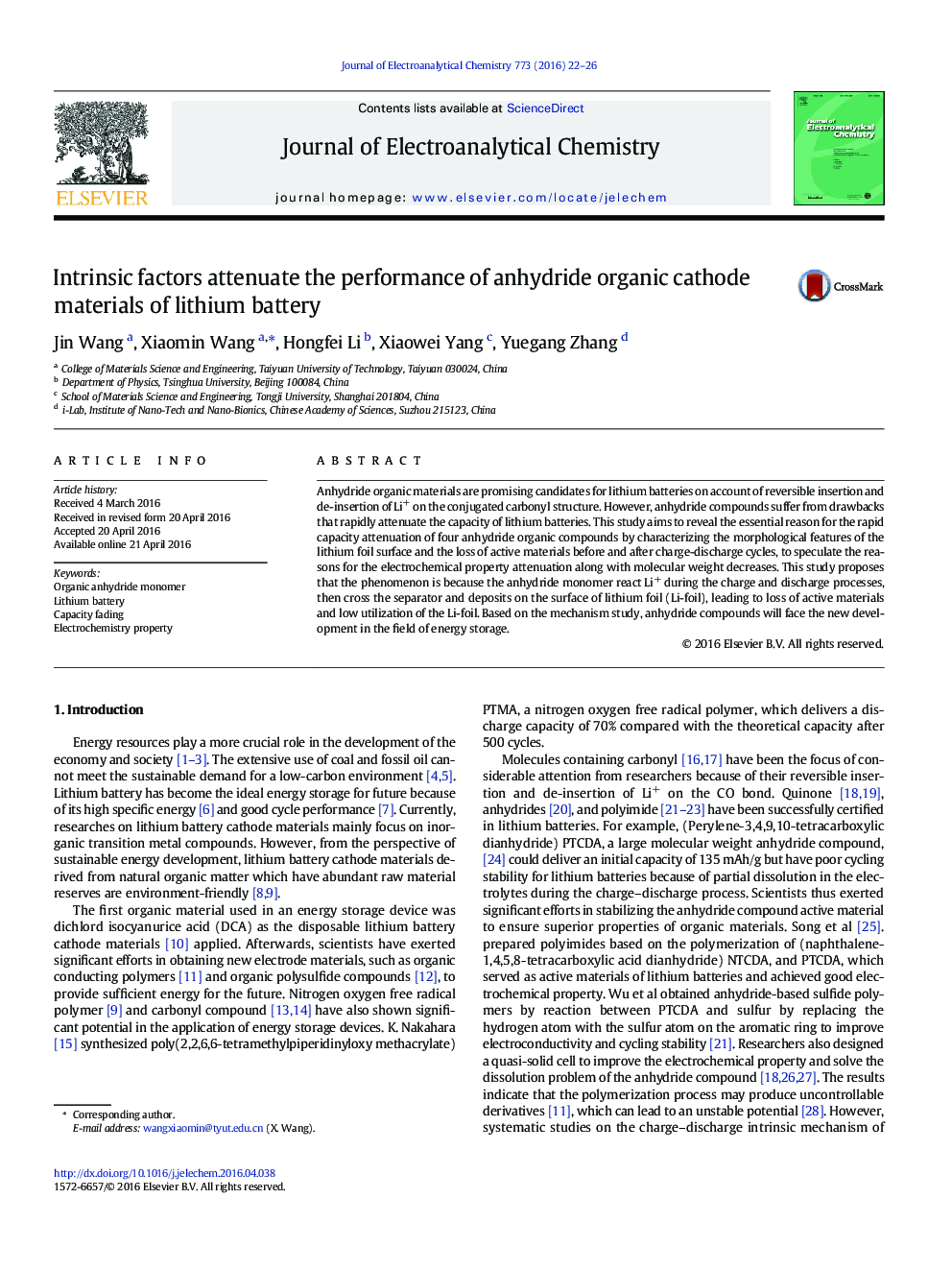| Article ID | Journal | Published Year | Pages | File Type |
|---|---|---|---|---|
| 217812 | Journal of Electroanalytical Chemistry | 2016 | 5 Pages |
•Apply the organic anhydride compound for the cathode material in lithium batteries•Reveal the essential reasons for rapid attenuation capacity of anhydride compound•Observed the deposit sediment on the surface of Li-foil after different circulations•Show the growth process of the deposit sediment from 1 to 100 circulations•Prove their electrochemistry property decline with the decrease of molecular weight
Anhydride organic materials are promising candidates for lithium batteries on account of reversible insertion and de-insertion of Li+ on the conjugated carbonyl structure. However, anhydride compounds suffer from drawbacks that rapidly attenuate the capacity of lithium batteries. This study aims to reveal the essential reason for the rapid capacity attenuation of four anhydride organic compounds by characterizing the morphological features of the lithium foil surface and the loss of active materials before and after charge-discharge cycles, to speculate the reasons for the electrochemical property attenuation along with molecular weight decreases. This study proposes that the phenomenon is because the anhydride monomer react Li+ during the charge and discharge processes, then cross the separator and deposits on the surface of lithium foil (Li-foil), leading to loss of active materials and low utilization of the Li-foil. Based on the mechanism study, anhydride compounds will face the new development in the field of energy storage.
Graphical abstractFigure optionsDownload full-size imageDownload as PowerPoint slide
